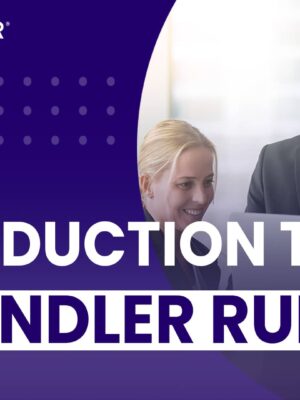Sales Professionals: What is on the Horizon for 2021?

Given the upheavals and uncertainty of 2020, many leaders and salespeople have been asking us what we see on the horizon as the next year approaches. What skills and adaptations will be necessary not just to survive, but to thrive in 2021?
After meeting with tens of thousands of sales professionals this year, we would suggest you review and evaluate the following four trends as you begin planning for the year to come.
Trend #1. Virtual Selling. No matter what happens in terms of recovery from the pandemic, virtual selling is here to stay. That doesn’t mean it will represent 100% of what we will all be doing in the upcoming years, but it does mean that the assumption that we will go back to primarily face-to-face selling is, in most markets, probably not realistic. We have learned over the past months that by selling remotely, we can not only effectively connect with buyers, but also be more productive in our discussions with them and spend less time traveling. The selling landscape has changed, and that change requires us all to commit to sharpening and upgrading the skills necessary to succeed in virtual selling. Engaging people in a virtual selling process, for instance, is a totally different skill set than engaging with them in person; so is building trust over time. A new set of best practices has emerged in these and other areas that connect to selling remotely; it is important to understand them, practice them, and reinforce them. (See this post for more help on virtual selling.)
Trend #2: Videoconferencing. Constant communication with customers is now a central component of the virtual sales “touch,” and the preferred mode for that communication has emerged in unmistakably 2020: video. The dominant platform here is, and seems likely to remain, Zoom. Virtual sales meetings with real-time video and audio happen much more frequently than they did a year ago, providing more buyers with the ability to participate in important discussions without the need for juggling calendars and spending a lot of time flying. This makes perfect sense from the buyer’s side: the more people there are on the call, the less risk there is of making a bad decision. So, we can expect to have more buyers participating in the buying decision in 2021. Personally, I have noticed more and more influencers from the buying side asking to participate in Zoom calls, and I have also seen that many of these people are open to talking to their counterparts at the selling organization. This is a positive development – assuming, of course, that the team-selling skill set is up to date! So: What questions will each member of the selling team be asking? When? Who will be leading the meeting? Who will be proposing the next step? Today’s salespeople are, very often, running from Zoom call to Zoom call, and many of those calls can now be expected to feature multiple decision makers. That makes it more important than ever to do an effective pre-call plan before logging on. You can download Sandler’s pre-call planner here. Share it with your team. You don’twant members of the sales team logging on for an important Zoom call with zero preparation!
Trend #3. Getting creative to keep net new appointment totals where they should be. 94% of the CEOs and sales leaders we talk to are deeply concerned about how the front end of their organization’s sales funnel looks. As sales professionals, we must be constantly ensuring that we are filling that funnel with enough qualified leads. Doing that in 2021 may look a little different than what we have done in the past. Many of the teams we work with are not receiving quite the same level or quality of qualified leads from Marketing that they were getting a year ago. That’s not a sign that the people in Marketing are out to get us or have simply stopped doing their job; it is a likely sign that today’s buyers are more wary and less forthcoming than they were before the pandemic. Who can blame them? The unpredictability of 2020 has also left many buyers more likely to throw last-minute stalls our way. We get the deal to the two-yard-line, and then find out that the commitment to the buying decision has evaporated. These are symptoms of the time we live in. All they mean is that we need to adjust our appointment totals upwards at the front end of the funnel. It’s time to upgrade our prospecting skills and engage in more effective virtual prospecting, using a whole new set of tools to keep our appointment totals where they should be. If this is something you don’t have a lot of experience with, we can help.
Trend #4. To lowball, or not to lowball? Many organizations are cutting prices on their products and services under one or both of the following rationales: a) “Let’s make up for lost revenue ground in 2020,” and/or b) “Let’s buy out the market from competitors who aren’t as financially sound as we are.” This “last man standing” strategy is understandable in certain situations, but it has its limits, and it can backfire. For one thing, it may encourage salespeople to discount instinctively, without having conducted a real qualification of the buyer. That’s never a good idea. We’re reminding our clients and their sales teams to remain curious all the way through, to make sure they’re not moving too quickly through the buying process, to keep asking the tough questions, and to secure a price that is fair to both sides. In many cases, when people connect their offering to a specific buyer pain, they are finding that it makes much more sense not to lowball. For more on delivering a presentation based on the buyer’s unique pains, see this video.
These are some of the issues that sales professionals will want to pay attention to as they move forward into 2021. If you are aware of them and make the relevant changes to your game plan, you and your team can make the coming year one of your best ever.








